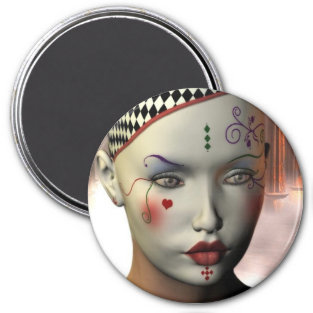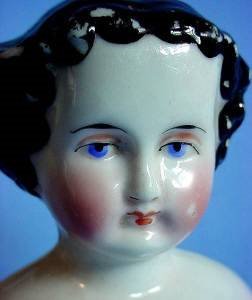According to Edward Said, orientalism refers to the manner in which the West interprets or comes to terms with their experiences and encounters with the foreign or unfamiliar Orient, or the East. Said claimed that "the Orient" was a European invention to denote East Asia as a place of exoticism, romance, and remarkable experiences and also as a concept to contrast (commonly negatively) against Western civilization.
The term "Yellow Peril" refers to a White apprehension, peaking in the late 19th-century, that white inhabitants of Australia, Canada or the United States would be overwhelmed and swamped by a massive influx of East Asians; who would fill the nation with a foreign culture and speech incomprehensible to those already there and "steal" jobs away from the white inhabitants. During this time, numerous anti-Asian sentiments were expressed by politicians and writers, especially on the West Coast, with headlines like "The 'Yellow Peril'" (Los Angeles Times, 1886) and "Conference Endorses Chinese Exclusion" (The New York Times, 1905) and the later Japanese Exclusion Act. The American Immigration Act of 1924 limited the number of Asians because they were considered an "undesirable" race. Australia had similar fears and introduced a White Australia policy, restricting immigration between 1901 to 1973, with some elements of the policies persisting to the 1980s. On 12 February 2002, Helen Clark, then prime minister of New Zealand apologised "to those Chinese people who had paid the poll tax and suffered other discrimination, and to their descendants. She also stated that Cabinet had authorised her and the Minister for Ethnic Affairs to pursue with representatives of the families of the early settlers a form of reconciliation which would be appropriate to and of benefit to the Chinese community." Similarly, Canada had in place a head tax on East Asian immigrants to Canada in the early 20th century; a formal government apology was given in 2007 (with compensation to the surviving head tax payers and their descendants).
In many periods of America's history, Asian Americans have been perceived, treated, and portrayed by many in U.S. society as "perpetual" foreigners who are unable to be assimilated and inherently foreign regardless of citizenship or duration of residence in the United States. A similar view has been advanced by Ling-chi Wang, professor emeritus of Asian American Studies at the University of California, Berkeley. Wang asserts that mainstream media coverage of Asian communities in the United States has always been "miserable." He states, "In [the] mainstream media's and policymakers' eyes, Asian Americans don't exist. They are not on their radar... and it's the same for politics."
According to Jose Antonio Vargas, writer for the Washington Post, there's a game he likes to play called WTAG: Where's the Asian guy? In 2007, there were hardly any apart from Daniel Dae Kim, co-star of ABC's "Lost." Never mind that he speaks only Korean on the show. A study by UCLA researchers for the Asian American Justice Center (AAJC), Asian Pacific Americans in Prime Time, confirmed that there had not been a tremendous amount of progress for Asian-American actors, on network TV. While Asian-Americans make up 5 percent of the U.S. population, the report found only 2.6 percent were primetime TV regulars. Shows set in cities with large Asian populations, like New York and Los Angeles, had few Asian roles. One out of five people in the New York City borough of Queens is Asian, but CBS's "The King of Queens" had no Asian characters through its nine-season run. This is a series that had over 13 million viewers at its most popular and had been released in over 29 countries.
Actress Ming-Na, who plays an FBI agent on the Fox show "Vanished," noticed that about Orange County, California, where the show "The O.C." is based. In an interview with "20/20": "I don't know what Orange County that show is representing. But there is not one single Asian in that show. And I am sorry, that is just wrong. It would be like having a show take place in China and not having one Asian represented." It has been noted that, in reality, while Orange County has traditionally been one of California's richest, whitest, and most conservative counties, demographic trends suggest the County's white population is downright geriatric. Some 875,000 Orange County residents are Latino, according to Census 2000—just under a third of the total population of 2.8 million. The county also hosts the nation's largest Vietnamese population (145,000) and attracts significant populations of Filipino, Japanese and Indian Americans. Collectively, Asian Americans are the County's most affluent segment, buying homes valued at twice the county average. It is also home to UC Irvine, a prestigious university in which Asians actually outnumber Whites 2-1 (54% to 28%). Including white Hispanics, White Americans are nominally 64% of OC population but it fields barely 44% of public school enrollment. This was never reflected in the series.
Asian Americans have also been stereotyped as a "model minority"; that is, positive traits are applied as a stereotype. Asians (as a whole) are seen as hardworking, politically inactive, studious, intelligent, productive, and inoffensive people who have elevated their social standing through merit and diligence. This label is given in contrast to other racial stereotypes which routinely accuse minorities of socially unwelcome traits: such as laziness or criminal tendencies.
However, many Asian Americans believe the model minority stereotype to be damaging and inaccurate, and are acting to dispel this stereotype. Scholars, activists, and most major American news sources have started to oppose this stereotype, calling it a misconception that exaggerates the success of Asian Americans. According to those trying to debunk this belief, the model minority stereotype alienates Asian Americans from other minorities and covers up actual Asian American issues and needs that are still not properly addressed in America today. For example, the widespread notion that Asian Americans earn higher-than-average income obscures issues such as the "glass ceiling"/"bamboo ceiling" phenomenon, where advancement into the highest-level managerial or executive positions is blocked, and the fact that Asian Americans must acquire more education and work more hours than their white counterparts to earn the same amount of money. The "model minority" image is also seen as being damaging to Asian American students because their assumed success makes it easy for educators to overlook Asian American students who are struggling academically. For example, 25.2% of Asian Americans over age 25 hold a bachelor's degree compared to only 15.5% of the general American population, thus giving the impression of Asian American success. However, only 6.9% of Cambodians, and 6.2% of Laotians in this age group in America hold bachelor's degrees- albeit attributed by researchers due to poverty and severe mental health issues due to these nations' civil war. Despite this stereotype of supposed Asian American success, there is a high 80% unemployment rate among the Hmong Americans and other Asian Americans groups from refugee backgrounds. However, examples of criminal and unethical behavior are in contrast to the model minority construct. In 2007, Asian Americans were implicated in cheating scandals, shooting sprees, and political corruption. Most notable is the Virginia Tech massacre by Seung-Hui Cho, which led to the deaths of 33 individuals, including Cho himself. The shooting spree, along with Cho's Korean ethnicity, stunned the Asian American community. Other scandals which made headlines were the arrests of Norman Hsu, a former campaign donor to Hillary Clinton, Ed Jew, the former San Francisco Supervisor, and Kim Kyung Joon, a former Los Angeles City Commissioner who served as a business partner to current South Korean president Lee Myung-bak. Also in 2007, 34 MBA students, primarily of East Asian descent, were caught in a major cheating scandal at Fuqua School of Business of Duke University. Of those 34 students, 9 were permanently expelled, 15 were suspended for one year, and the rest received failing grades.
The term "Yellow Peril" refers to a White apprehension, peaking in the late 19th-century, that white inhabitants of Australia, Canada or the United States would be overwhelmed and swamped by a massive influx of East Asians; who would fill the nation with a foreign culture and speech incomprehensible to those already there and "steal" jobs away from the white inhabitants. During this time, numerous anti-Asian sentiments were expressed by politicians and writers, especially on the West Coast, with headlines like "The 'Yellow Peril'" (Los Angeles Times, 1886) and "Conference Endorses Chinese Exclusion" (The New York Times, 1905) and the later Japanese Exclusion Act. The American Immigration Act of 1924 limited the number of Asians because they were considered an "undesirable" race. Australia had similar fears and introduced a White Australia policy, restricting immigration between 1901 to 1973, with some elements of the policies persisting to the 1980s. On 12 February 2002, Helen Clark, then prime minister of New Zealand apologised "to those Chinese people who had paid the poll tax and suffered other discrimination, and to their descendants. She also stated that Cabinet had authorised her and the Minister for Ethnic Affairs to pursue with representatives of the families of the early settlers a form of reconciliation which would be appropriate to and of benefit to the Chinese community." Similarly, Canada had in place a head tax on East Asian immigrants to Canada in the early 20th century; a formal government apology was given in 2007 (with compensation to the surviving head tax payers and their descendants).
In many periods of America's history, Asian Americans have been perceived, treated, and portrayed by many in U.S. society as "perpetual" foreigners who are unable to be assimilated and inherently foreign regardless of citizenship or duration of residence in the United States. A similar view has been advanced by Ling-chi Wang, professor emeritus of Asian American Studies at the University of California, Berkeley. Wang asserts that mainstream media coverage of Asian communities in the United States has always been "miserable." He states, "In [the] mainstream media's and policymakers' eyes, Asian Americans don't exist. They are not on their radar... and it's the same for politics."
 St. Trianian (Lusis) owned by |  The new China Doll: No sex |  Doll Face / Andrew Huang |  China Doll Dollface Sweet |  her China-doll face and |
 Hey Dollface 1 |  China+doll+face |  Liu Wen: The New Face of Estée |  liu\x26#39;s China doll face. |  Miown China Doll has 2 blue |
Asian Americans have also been stereotyped as a "model minority"; that is, positive traits are applied as a stereotype. Asians (as a whole) are seen as hardworking, politically inactive, studious, intelligent, productive, and inoffensive people who have elevated their social standing through merit and diligence. This label is given in contrast to other racial stereotypes which routinely accuse minorities of socially unwelcome traits: such as laziness or criminal tendencies.
 China doll face clutch | Face Art by Tash - Photo |  and china doll face, |  Texan (China Doll Face) |  3 inch china head doll face |
 china been China+doll+face |  Broken Dolls |  China doll face 王嘉韻 |  BEAUTIFUL china doll face! |  vinyl China doll face factory |












No comments:
Post a Comment